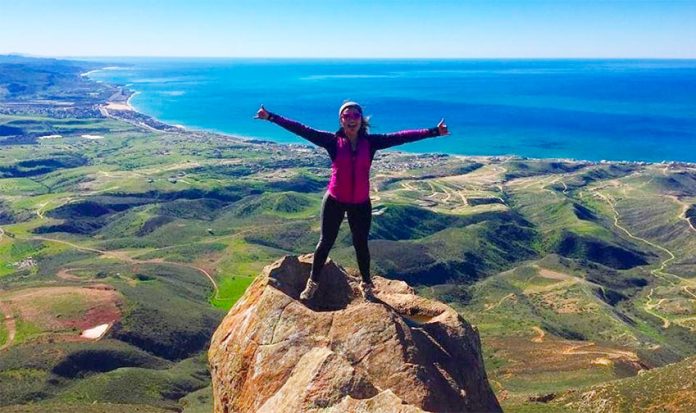Hiking is becoming an increasingly popular activity in Baja California and the northern border state looks set to attract even more nature lovers with the certification of what will be the longest trail in Latin America.
There are currently 12 certified, marked trails in Baja California, according to state officials, more than any other state in Mexico. They include trails in the Sierra de San Pedro Martír National Park as well as coastal tracks in Ensenada and Rosarito.
The newspaper The San Diego Union-Tribune reported that the state is now in the process of certifying a 68-mile, or 110-kilometer, trail that will run across the state and along the coast down to Baja California Sur. It will be the longest in Latin America.
The Union-Tribune also reported that the state government has partnered with the company Baliza México to certify Baja California hiking trails according to an internationally accepted system that makes them both safer and easier to navigate and enjoy.
“People want to escape the day-to-day. If we add in the pandemic, people have had even more to deal with, and they are looking for that escape,” said Mónica Véjar, executive director of Baliza México, explaining the increasing popularity of hiking.

She said that Baliza works with people who live near the hiking trails so that they can become informal guides or sell water or offer washroom access.
“At first, some [locals] were asking, ‘Do we need to put in cabanas and restaurants?’ and we said ‘No, no, no. Water, restrooms and a trail-head,’ and that makes for a great hike,” Véjar said.
“[Now] they are telling me they are already overwhelmed by the number of people who are arriving, and while it is certain that people want to escape, it is very important that people do it responsibly and part of doing it responsibly is going to places that are already marked,” she said.
One person who has recently caught the hiking bug is 45-year-old Mexicali resident Beatriz Ojeda, who was laid off from her job as a dialysis technician during the pandemic.
While she was feeling depressed about losing her job, Ojeda was invited by a friend to go on a hike and really enjoyed the experience. She, her 24-year-old daughter and a friend recently set out on a hike to climb the highest mountain in Rosarito, Cerro El Coronel, which affords breathtaking views over the Pacific Ocean.
During the hike, markers installed by Baliza were very helpful to Ojeda and her companions, the Union-Tribune said, noting that the precarious path to the peak of El Coronel makes for a challenging hike.

“I feel totally different today,” Ojeda said the day after the hike. “It just opens up your mind, your heart and gives you a totally different perspective. You don’t need to go all the way up to take it all in. You can just sit down and breathe and watch the view and it does a world of good.”
Tourism officials hope to attract people from nearby San Diego, and farther afield, to enjoy the state’s trails, which Baliza is also geocoding so that maps show up on search engines such as Google.
“The truth is we’re inviting the whole world,” said Dr. Ruben Roa, Baja California’s deputy minister of sustainable economy and tourism.
Promotion of the hiking opportunities is an extension of a concerted effort to make tourists aware of activities in the state beyond spring break partying. Culinary tours, the abundant craft beer offerings and the wineries in the Valle de Guadalupe have all helped to attract new and different kinds of visitors to Baja California.
Now, the state’s certified hiking trails look set to do the same.
“The idea is to extend the [Baja California] experience … to complement it,” Roa said. “In other words, we’re not closing off those other activities that are welcome, but I must admit that have exploited us for a long time, and did not allow for a recognition of the natural and pristine beauty of the state, especially in the southern portion of the state.”
Source: The San Diego Union-Tribune (en)
